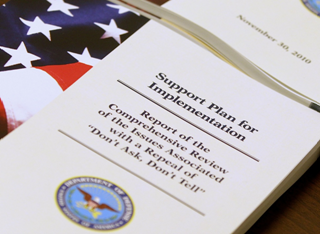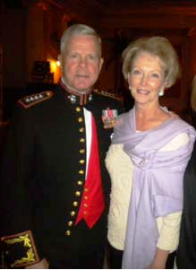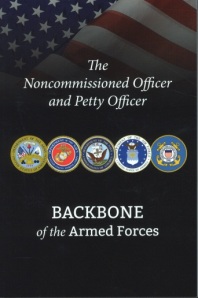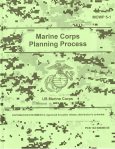 On September 20, 2011, the 18-year old United States military official “Don’t Ask, Don’t Tell” (DADT) policy came to an end.
On September 20, 2011, the 18-year old United States military official “Don’t Ask, Don’t Tell” (DADT) policy came to an end.
Six months later, a new book by J. Ford Huffman and Tammy S. Schultz was published by the Marine Corps University Press entitled, The End of Don’t Ask Don’t Tell: The Impact in Studies and Personal Essays by Service Members and Veterans.
This is a collection of four scholarly studies and 25 essays about the impact of living under this policy from a diverse group of gay and straight, current and former military members from the Army, Navy, Air Force and Marine Corps.
Since June is Lesbian, Gay, Bisexual and Transgendered (LGBT) Pride Month, we thought it appropriate to review this book available through GPO and give some background on the policy that led to it.
Rise of Don’t Ask, Don’t Tell
In the early 1990’s in the United States, a push for more rights for non-heterosexuals in both civilian and military life was rising. Eventually, on June 2, 2000, President Bill Clinton declared June 2000 the first official “Gay & Lesbian Pride Month” in the United States. (This was later renamed by President Barack Obama in 2009 who declared June as Lesbian, Gay, Bisexual and Transgendered Pride Month which it is called today).
However, lawmakers and the military establishment in 1993 were not ready to allow openly gay, lesbian or bisexual individuals to serve in the U.S. Armed Forces.
As a compromise, United States federal law Pub.L. 103-160 (10 U.S.C. § 654 called the “Don’t Ask, Don’t Tell” Policy, nicknamed DADT, was passed and went into effect on December 21, 1993. It “prohibited military personnel from discriminating against or harassing closeted homosexual or bisexual service members or applicants, while barring openly gay, lesbian, or bisexual persons from military service” (Wikipedia).

Image: Web banner from the U.S. Army’s DADT website
Not Asking vs. Not Telling
The “Don’t Ask” part of the DADT policy specified that superiors should not initiate questioning or investigation of a military service member’s sexual orientation without first having witnessed disallowed behaviors or received credible evidence. Because of the number of unauthorized investigations and harassment of suspected servicemen and women, the policy was expanded to “don’t ask, don’t tell, don’t pursue, don’t harass.”
Under the “Don’t Tell” aspect of the policy, the military service members themselves were prohibited from disclosing their sexual orientation or homosexual relationships while actively serving in the United States Armed Forces.
Anyone who did disclose or were discovered to be homosexual could be separated (discharged) from the military, resulting in some 14,346 members of the military being discharged because of their sexual orientation under 18 years of the DADT policy.
Changing Times, Changing Military Needs Led to DADT’s Repeal
After nearly two decades under DADT and the increasing need to recruit and retain the best able service members to help fight wars on multiple fronts, many American military and political leaders felt it was time to repeal “Don’t Ask, Don’t Tell.” The Pentagon performed a detailed analysis of possible issues and recommendations for implementation in the November 30, 2010 Support Plan for Implementation: Report of the Comprehensive Review of the Issues Associated with a Repeal of “Don’t Ask, Don’t Tell”.
 Image: Pentagon’s November 2010 implementation plan and report on the issues associated with DADT repeal. Source: Gawker.com
Image: Pentagon’s November 2010 implementation plan and report on the issues associated with DADT repeal. Source: Gawker.com
Bipartisan support in Congress led them to pass the “Don’t Ask, Don’t Tell Repeal Act of 2010.” The caveat was that the policy would remain in place until the President, the Secretary of Defense, and the Chairman of the Joint Chiefs of Staff of the military all certified that the repeal of DADT would not harm military readiness, followed by a 60-day waiting period. The required certification was sent to Congress on July 22, 2011, which set the end of DADT for September 20, 2011.
In a statement accompanying the certification, President Obama said:
Today’s report confirms that a strong majority of our military men and women and their families—more than two-thirds—are prepared to serve alongside Americans who are openly gay and lesbian. This report also confirms that, by every measure, from unit cohesion to recruitment and retention to family readiness, we can transition to a new policy in a responsible manner that ensures our military strength and national security.
Thus, on September 20, 2011, “Don’t Ask, Don’t Tell” was repealed. Said Sen. Susan Collins of Maine, a Republican credited with pulling together bipartisan support for the repeal: “Today, for the first time in our history, we will welcome the service of any qualified individual who’s willing to put on the uniform of our country,” (Source: CNN).

Image: President Obama signs the “Don’t Ask, Don’t Tell Repeal Act of 2010.” Source: AP
Covered in the Book
The first part of The End of Don’t Ask Don’t Tell book contains academic reports and research that “shed light on the way forward for the services and policy makers.” This includes a report by Dr. Nora Bensahel who conducted extensive research with RAND Corporation on experiences of the other 26 countries who allow homosexuals to openly serve in their militaries. Other reports by military officers include one discussing the importance of considering service members’ “family readiness,” as well as the prevailing views and culture in the military in 2010 toward “Don’t Ask, Don’t Tell.”
The second part of the book includes personal essays from both gay and straight members of the military who served under DADT, emphasizing their personal experience of living under this policy. In them, the authors either provided details or “assurances that they were willing to testify under oath regarding their experiences.” As described by editors Schultz and Huffman in their introduction: “These personal essays peel back the curtain of the shame, uncertainty, homophobia, anger, fear, and other emotions of living under DADT. These are the views, recollections and words of the authors alone.”
In one essay, a former female Marine described herself as: “I was a woman. I was black. I was gay. ‘Don’t ask, don’t tell.’ I was invisible.” She concludes her essay with hope that her story helps others:
“Change and transition can be difficult, and there will be casualties along the way. If sharing my story helps someone in the military whether they are gay or straight, it will have been worth it. If it helps the leadership make different decisions that include and help everyone with the transition of the repeal of DADT, it will have been worth it.”
An Air Force officer who was discharged after his superior searched his personal emails and discovered he was gay was gratified that so many members of his old unit said they’d be honored to serve with him again. He sums up his essay with:
“Soon I hope to resume my career as an officer and leader in the Air Force without the mandatory silence of DADT and the constant fear that I will be fired… Now [after the repeal of DADT] our military can judge its men and women on their merit and not their sexual orientation.”

Image: A sign at Naval Air Station Whidbey Island in Washington State. Source: Oregon Public Broadcasting
The Best Story Ends with a Non-Event
The most common argument by critics against DADT’s repeal was that changing the policy in the middle of multiple wars would be a distraction and could cost lives. This was the original opinion of Marine Commandant General James E. Amos who lobbied against allowing gays to serve openly when the repeal was first passed in 2010, even though the Pentagon’s own 2010 research had shown already that 70% of Service members said they would be able to “work together to get the job done” with a gay service member in their immediate units.
Today, Amos, as are other military leaders, are pleased with the progress of the Armed Forces’ implementation of the repeal, with mandatory training sessions for all levels of the military haven taken place. DADT support groups say they have received no reports of harassment, discrimination or negative experiences connected with the DADT repeal from gay and lesbian active military.
 In fact, an April 2012 article in the Marine Corps Times seems to show just how smoothly the transition has gone, as demonstrated by this anecdote involving Amos and his wife, Bonnie, at the Marine Corps Birthday Ball in November 2011. During the Ball, a female Marine introduced her lesbian partner to Amos’ wife, General Amos explained: “Bonnie just looked at them and said, ‘Happy birthday ball. This is great. Nice to meet you…’ That is happening throughout the Marine Corps.”
In fact, an April 2012 article in the Marine Corps Times seems to show just how smoothly the transition has gone, as demonstrated by this anecdote involving Amos and his wife, Bonnie, at the Marine Corps Birthday Ball in November 2011. During the Ball, a female Marine introduced her lesbian partner to Amos’ wife, General Amos explained: “Bonnie just looked at them and said, ‘Happy birthday ball. This is great. Nice to meet you…’ That is happening throughout the Marine Corps.”
Image: General Amos & Bonnie Amos. Source: Black Tie International Magazine.
Retired Marine Col. Brendan Kearney predicted a smooth transition in one of the book’s essays: “I believe the demise of DADT will quickly become a non-event, and the services as a whole will get on with the business at hand: Defeating the enemies of our country.”
Co-editor Tammy Schultz believes The End of Don’t Ask Don’t Tell book outlines a “relatively smooth compliance with the new law” according to a Huffington Post article. She concludes: “That is not to say that challenges don’t remain ahead, and our book details some of those. But the U.S. military can more than handle it.”
So in the case of the end of the Don’t Ask, Don’t Tell policy, the best story ending seems to be that it is a non-event.
UPDATE 2012/06/27: On June 26, 2012, the Defense Department hosted its first ever Lesbian, Gay, Bisexual & Transgender Pride Month event since the repeal of “Don’t Ask Don’t Tell” at the Pentagon. Click here to watch the program on C-SPAN.
HOW DO I OBTAIN The End of Don’t Ask Don’t Tell: The Impact in Studies and Personal Essays by Service Members and Veterans?
- Buy it online 24/7 at GPO’s Online Bookstore.
- Buy it at GPO’s retail bookstore at 710 North Capitol Street NW, Washington, DC 20401, open Monday-Friday, 9am to 4pm, except Federal holidays, (202) 512-0132.
- Find it in a library.
About the Author: Michele Bartram is Promotions Manager for GPO’s Publication and Information Sales Division and is responsible for online and offline marketing of the US Government Online Bookstore (http://bookstore.gpo.gov) and promoting Federal government content to the public.




 Posted by Trudy Hawkins
Posted by Trudy Hawkins 



















































